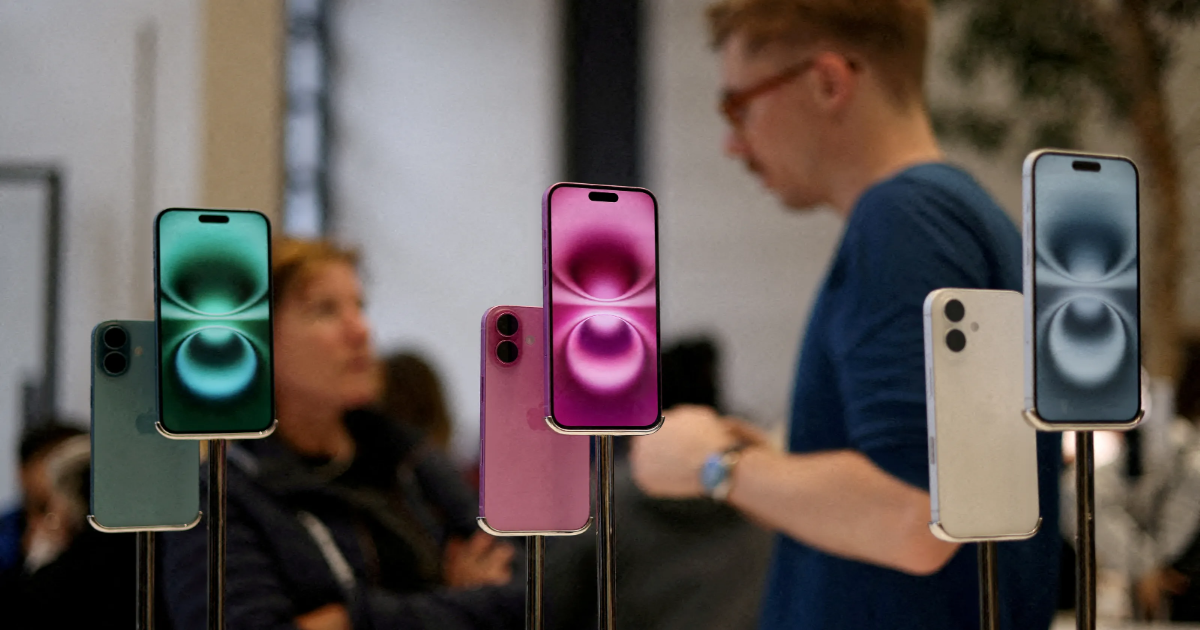Would you pay $2,300 for an iPhone?
President Donald Trump imposed 20% tariffs on China after taking office in January. Under a sweeping new plan aimed at stimulating U.S. manufacturing announced Wednesday, he added another 34% in reciprocal tariffs, bringing the total to 54%.
The tariff − the highest U.S. tariff on any country − is raising the specter of steep price hikes on goods imported from China.
Most of the 200 million iPhones Apple produces each year are made in China. Of the consumer goods affected by the 54% tariff, iPhones could take the biggest hit from the sharp hike.
Apple, which commands high profit margins, would have to either absorb the costs and pass them onto investors or raise prices and pass them on to consumers. If Apple were to do the latter, consumers could see prices jump as much as 43%, analysts estimated Thursday.
Need a break? Play the USA TODAY Daily Crossword Puzzle.
In that scenario, Wedbush Securities analyst Daniel Ives said an iPhone could cost as much as $2,300.
Even the cheapest new iPhone – the iPhone 16e – would see a big jump in price from $600 to $858 – a risky strategy when inflation-weary consumers are reeling from high prices and cutting back on pricey purchases.
Angelo Zino, equity analyst at CFRA Research, said Apple would have a “tough time” shifting more than 5% to 10% of the cost to consumers.
He also predicted Apple would hold off on major price increases until this fall when the iPhone 17 is scheduled to launch.
Apple did not respond to a request for comment.
Shares plunged 9% to $203.18 in Thursday trading, their worst showing since September 2020, amid a broad tariff-fueled selloff.
Trump has portrayed his tariffs as a means to raise revenue and offset costs from proposed tax cuts.
During his first term, the White House imposed tariffs on Chinese imports but did not put tariffs on iPhones. So far this Trump administration has not issued an exemption.
Apple CEO Tim Cook attended Trump’s inauguration. In February, Apple said it would invest $500 billion in the United States, including a factory in Texas and 20,000 research and development jobs.
“This whole China tariff thing is playing out right now completely contrary to our expectation that American icon Apple would be kid-gloved like last time,” Barton Crockett, analyst at Rosenblatt Securities, said in a research note. He estimated that tariffs could cost Apple up to $40 billion.
Negotiations with the White House and China are likely and an exemption is still possible, according to Zino.
“If anyone can get an exemption, it would be Apple, and it could be a way for Trump to calm markets if the situation gets out of hand,” he wrote in a research note. “Still, investors shouldn’t hold out hope of an exemption as Trump 2.0 feels much different than Trump 1.0.”
According to Counterpoint Research, American consumers will feel “the immediate impact of the newly tariffed smartphone prices in an already inflationary climate,” calling it a no-win situation.
The U.S. does not manufacture smartphones with China, South Korea, Taiwan, India and Vietnam dominating the supply chain and manufacturing.
“I guess the logic is ‘make it too expensive for smartphone OEMs to produce overseas and they’ll eventually shift to the US,’” Neil Shah, Counterpoint’s vice president of research, said in a note. “But that will never happen without massive subsidies and cheaper and skilled labor. There is zero cost advantage in manufacturing in the U.S.”
Wedbush Securities’ Ives said it would take three years and $30 billion to move 10% of Apple’s supply chain from Asia to the U.S.
“For U.S. consumers, the reality of a $1,000 iPhone being one of the best-made consumer products on the planet would disappear,” he said in a research note. “Making Apple products and iPhones in the US sounds great behind the microphones in the 202 area code but in reality they are a fantasy tale that in our view will never happen.”
